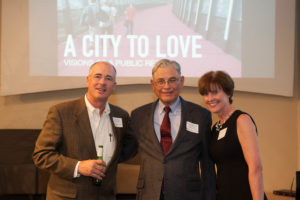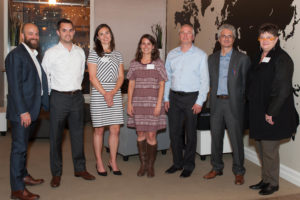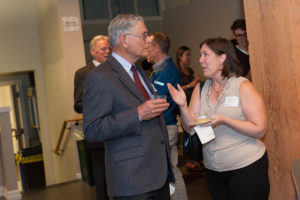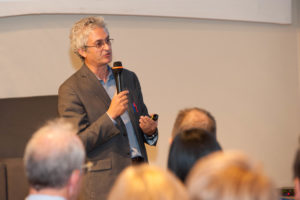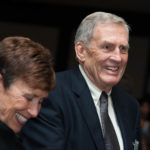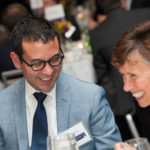Category: Seattle
Recent Runstad Center Research
The Runstad Center released the Washington State Condominium Report this past July, which examines the current Seattle market and six other western cities, focusing on construction of new condominiums. Read more about this study from the author David Leon, MSRE Candidate 2017, as well as a link to the full report here
In August, Peter Orser wrote a forward for a recent feasibility study conducted by Collision RTKL focused on mass timber construction, a relatively new technology that could deliver a sustainable solution to urban growth challenges. The full study can be found here
The 2nd Quarter Washington State Housing Market Report showed increases in sales and growth, although the number of new building permits is down compared to last year. Read the full market summary here
Welcome MSRE Class of 2018!
 New MSRE students dove into their school year on Monday, September 19, 2016 with a week-long orientation that took them from the University District to Bellevue, Pioneer Square, Downtown, to Kent.
New MSRE students dove into their school year on Monday, September 19, 2016 with a week-long orientation that took them from the University District to Bellevue, Pioneer Square, Downtown, to Kent.
“The Runstad Center has multiple goals for its’ week long orientation program for students. We want students to begin their studies with inspiration from the best projects and most engaging leaders in the industry. We want students to connect with the industry from the get go – to learn about the industry organizations and how they can participate in them; to meet the advisory board members, mentors and our alumni so they can call on them as resources throughout their time with us,“ says Suzanne Cartwright, Associate Director of the Runstad Center.
During this week, the MSRE Class of 2018 met with faculty and professors to learn about the robust curriculum and elective offerings provided by the Runstad Center, and were introduced to real estate community networks, including ULI, NAIOP, CoreNet, and CREW. This ambitious week also had the students visiting some of the most prominent projects in this region, notably the new Amazon Headquarters, the Spring District, and the new Weyerhaeuser Headquarters.
Taryn Rehn, MSRE Class of 2018, said, “It was an action packed orientation week filled with inspiring speakers, events, and tours. We got a rare tour of Amazon headquarters wherein the Director Global of Real Estate and Facilities described how their workplace design strategy supports the dynamic company culture… Part of the reason I chose the Runstad program was the involvement of the greater Puget Sound real estate community. This extraordinary level of support became evident as dozens of industry leaders offered presentations, did facility tours, and attended welcome events.”
Orientation week also allowed the new students build rapport with each other. As Suzanne puts it, “…we want them to build esprit du corps among themselves – to appreciate the diversity of perspectives and experiences that each student brings to the class – and to create a community of learners, an atmosphere of safety within which risks can be taken. An intimate graduate seminar program located in a dynamic, progressive city deserves no less!”
The Runstad Center is built on incredible industry support. This busy week allowed the next generation of real estate leaders to meet with well over 80 established real estate professionals.
“The Orientation Week is something that really sets this program apart… and it absolutely started the academic year off on the right foot… I was very impressed with the individuals who donated their time to meet with us all around the city. We met executives, developers, construction managers, property managers, brokers, and the list goes on and on. Their willingness to share their expertise and insight with us was very much appreciated,” said Will Mentor, MSRE Class of 2018.
“Local real estate professionals met with us in mentorship groups and one on one. Not only are they willing to be available while we’re in the program but they wholeheartedly want to be a helpful resource. They’ve made a long term commitment to the success of the Runstad program and its’ ability to produce future industry leaders. I was impressed by their generosity, being willing to volunteer time out of their busy schedules… Overall it was a fun, memorable week and set a very positive tone for our studies at the Runstad Center,” added Taryn. For more photos from the week as well as the Runstad Advisory Board New Student Reception, click here
3rd Annual Runstad Center Leadership Dinner
The 2016 Runstad Center Leadership Dinner brought the Seattle real estate industry together in a memorable evening celebrating the many successes of the Runstad Center. We honored George Rolfe, beloved professor of many students and alumni, celebrating his retirement with a collection of selfies and George-isms. Peter Orser announced the establishment of an alumni fund, led by five Runstad alumni who recognize the importance of the Runstad Center program in creating future real estate leaders. The keynote speaker, Brad Smith, President and Chief Legal Officer of Microsoft, gave an energizing talk that focused on our established history of innovation, pressing issues that Seattle is currently facing, and provided thoughtful suggestions about how the real estate community could implement long term solutions.
“The night was also a huge success for the Runstad Center, raising over $200,000 for Runstad Center operations, which will provide for our student programs and additional scholarships. Thank you to everyone who attended and supported the 2016 Runstad Center Leadership Dinner!!” -Peter Orser
Here are some photos from the evening, you can see even more here
Why the Runstad Center matters
On October 13th The Runstad Center held its 3rd Annual Leadership Dinner where we introduced our newest video describing “Why the Runstad Center matters!” It’s a great overview of the Center’s people and programs and definitely a must see if you are interested in an advanced degree in real estate. Check out the full video here
Creating liveable communties: a conversation with architect David Yuan
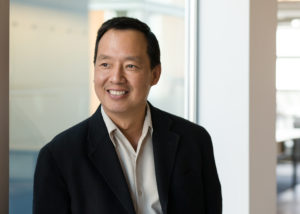 NBBJ, a leading global architecture firm, is well known locally for its work on familiar Seattle buildings, including the Bill & Melinda Gates Foundation, Safeco Field, and 2 Union Square. David Yuan is an Architect and Partner at NBBJ and has been a Runstad Board member since 2013. During his 26 year tenure at NBBJ, he has worked on a number of high profile projects, including Madison Centre, Russell Investments Center, Pacific Place, and the renovation of the Seaboard Building.
NBBJ, a leading global architecture firm, is well known locally for its work on familiar Seattle buildings, including the Bill & Melinda Gates Foundation, Safeco Field, and 2 Union Square. David Yuan is an Architect and Partner at NBBJ and has been a Runstad Board member since 2013. During his 26 year tenure at NBBJ, he has worked on a number of high profile projects, including Madison Centre, Russell Investments Center, Pacific Place, and the renovation of the Seaboard Building.
One of his recent projects, three new blocks for Amazon in the Denny Triangle, has garnered significant attention in recent press. Yuan worked with the NBBJ team on the design and to secure land use approvals for the three block project, which included obtaining three alley vacations from the city in less than a year.
“One of the main drivers of the project is to create a neighborhood,” Yuan emphasizes, “and to promote an active street environment, encouraging pedestrian activity through public amenities such as mid-block pedestrian connections, a dog park and a sports field.”
At the lower levels in each office tower, NBBJ has designed what they term “Centers of Energy”, spaces that foster informal meetings and increased collaboration among Amazon employees.
Of course, all eyes are on the Spheres, three iconic structures inspired by classic greenhouses that provide employees an opportunity hold meetings in a plant rich environment, complete with tree houses. “We wanted to create an environment where employees could think creatively and come up with ideas they may not have had in a standard workstation. The Spheres were technically challenging and designed not only to accommodate a diversity of plants, but to function as an effective place to meet during the day.”
NBBJ endeavors to design vibrant places that entice people to be creative, engage with each other and with their surroundings, a goal that Yuan continues to champion in his other current projects, including the 36-story Madison Center in downtown Seattle, and Centre 425, a 16 story office building in Bellevue both under construction.
As a Board member, Yuan stresses the host of opportunities offered by the Runstad Center. “Make sure you are well attuned to your own passions, interests, and skills,” he recommends, “and make use of the affiliated resources, including the great alumni and the industry connections.”
Acknowledging Seattle’s growth in recent years, he recognizes the need for all parties to coalesce and build the city together. “Seattle has been blessed as a destination for creative people. Because we are open to new comers and are located in a wonderful natural environment, we attract innovative companies who look to recruit the brightest and the best as a result,” Yuan says. “However, we are experiencing growing pains, affordability issues, and are heavily constrained by physical challenges like hills and water. So the question is, how do you design for growth? How do you create community that is connected to transit, has open space, and are highly liveable while accommodating higher densities? An answer must be found by neighborhood leaders, developers and policy makers working together to find creative solutions for the future.
Seattle Mass Timber Tower, a new study by Callison RTKL
Peter Orser was asked to write a forward for a recent feasibility study conducted by Callison RTKL. This study, Seattle Mass Timber Tower, focuses on mass timber construction (MTC) and the possibility of using MTC for a high rise. Mass timber is a cost effective, energy efficient, renewable material of excellent structural strength that demonstrates high fire resistance. MTC has been used successfully in Europe and British Columbia, but it is a relative newcomer to US building practices. Additionally, MTC structures in the US to date have been limited to 6-10 story buildings. Whether or not MTC can be used for buildings in the 30-40 story range has yet to be fully vetted. As the former CEO of Weyerhaeuser Real Estate Company and as the Director of the Runstad Center, Peter recognizes the importance of investing in, researching and discussing technologies that have the potential of delivering sustainable solutions to the urban growth challenges we face. Callison RTKL’s analysis, now publicly available, examines the possibility of utilizing MTC for high rise construction from design, sustainability, affordability, safety and construction perspectives. The full study can be found here.
Is Seattle becoming the next San Francisco?
Is Seattle becoming the next San Francisco? The Seattle Times breaks it down as Runstad Center Director Peter Orser weighs in on the topic.
Washington State Condominium Report released today
The Runstad Center’s Washington State Condominium Report was released today. MSRE student, Center researcher, and author of the report David Leon shares his thoughts…
The City of Seattle has been experiencing unprecedented population and economic growth over the last five years. As the city’s population has increased and the number of high-paying jobs has grown, prices for housing have increased significantly. Condominium development could provide an affordable in-city option for new housing. At present, condominiums are not being built in sufficient numbers to meet demand, and those that are being built are being sold at prices that are beyond the means of the average-income individual. Reasons for this dynamic include financing and capital markets, insurance coverage, and to some degree, legal liability for condominium developers. This paper examines the current state of the housing market in Seattle, focusing on construction of new condominiums, with comparisons to six other Western cities. The paper then examines elements of the Washington Condominium Act that may bear on the heightened liability for condominium builders, and suggests some options for reducing the liability, after comparison to four other states and the Canadian province of British Columbia. Changes to the Washington Condominium Act may be necessary but not sufficient conditions for the building of more affordable condominium units in Seattle. Financial incentives may be required to create the conditions for more affordable condominiums. For the market to be incentivized to build more affordable condominiums without public subsidy, economic opportunity for builders must offset the greater perceived risks and inefficiencies of smaller scale building through lower costs. Insurance costs and the risk of litigation are factors that, if mitigated, can contribute to tipping the scale toward the delivery of more affordable for-sale condominium product.

Sales price tranches for Seattle new condominium sales, 2010-2015.
The Center’s findings were discussed further with UW Today. Click here for the full report.
Leaving a Legacy: A Profile of Douglas Howe

It is more than fair to say that Douglas Howe, a Runstad Advisory Board member since 2011, has a distinct proclivity and sharp acumen for Pacific Northwest commercial real estate. He is the founder of Touchstone, currently one of the region’s most active developers, with approximately 2 million square feet currently under construction. Most recently, in June 2016, Touchstone opened the luxurious Thompson Hotel and Sequel Apartments, a stunning project designed by Tom Kundig of Olsen Kundig and Jensen Fey Architects. This project took an immense amount of work and collaboration, born out of Howe’s venerable career.
Douglas Howe quickly discovered that his primary passions were in landmark renovation and urban office, and his priority became creating the best work environments possible. One of his projects, the Kirkland Marriott Courtyard Hotel, initially included a contract with Marriott, but following September 11th, 2001, Marriott pulled out due to economic fears. Touchstone, however, already had the franchise. “We became accidental hotel developers. But we executed it well. It was a perfect compliment to Touchstone as an office developer… There are a lot of natural synergies between office and hotel development,” Howe reflects. Since the Kirkland Hotel, Touchstone has completed numerous, successful office and hotel projects, culminating in the Thompson Hotel.
“You know what I always said? If people live in it or sleep in it, we don’t do it!” Howe laughs. Given that he became an “accidental hotel developer”, the irony is that he is also capping his career with a well-received, high-end apartment complex attached to a boutique hotel. With its sweeping, unobstructed view of and proximity to iconic Seattle features, the Thompson Hotel and Sequel Apartments appeals to visitors and Seattleites alike. Howe’s philosophy in picking sites and projects has always been very intentional, strategic and forward looking. This particular project actually began in the 1990s, when Howe began developing a relationship with the site owners, but wasn’t until 2007 that he gained control of the property. From there, financing the project, establishing a design and program that was unique and appealing, and selecting the right hotel operator were all challenges that Touchstone faced. Their work has paid off, and is reflected in every distinguishing detail of the project. Touchstone worked closely with Josh Henderson, Seattle celebrity chef, to open Scout on the ground floor. Signature to most Thompson Hotels, there is a spectacular roof top deck, where Henderson has also established The Nest. Touchstone aimed to create a different, sexy and edgy space that appealed to a discerning, new age crowd, and, while they are still in the process of refining details and have only been open for one month, they are already attracting large, national corporations to utilize their event space and conference rooms. Connected to the Thompson Hotel by a clever courtyard space is Touchstone’s first multi-family project, Sequel Apartments, which enjoys all the benefits of being a hotel guest including room service, housekeeping and concierge. Sequel is already 75% leased and on track for full occupancy by the end of summer 2016.
Howe’s legacy lives on in the Touchstone team. As Howe began to plan his retirement, he put in motion a succession plan for Touchstone, partnering with Urban Renaissance Group and infusing Touchstone with significant capital for the next market cycle in an agreement lauded as NAIOP’s 2015 Deal of the Year. “Touchstone is a great team,” Howe says, “It’s up to them to find the future. I have every confidence that they will be successful.” Touchstone is the recent winner of the prestigious NAIOP Developer of the Year award, so it seems that Howe’s instinct about his team is spot on. The advice that he aspires to impart on all Runstad students, aspiring and current developers then, rings sound. “You can do better. Pay attention to the details and make an impact on the urban environment. As a developer, you have a responsibility to leave a legacy, a well-designed building that fits within the context of the urban environment and can withstand the test of time. You can create a special place. Developers can make that happen within a budget and we try to accomplish this and stand out in every project.”
